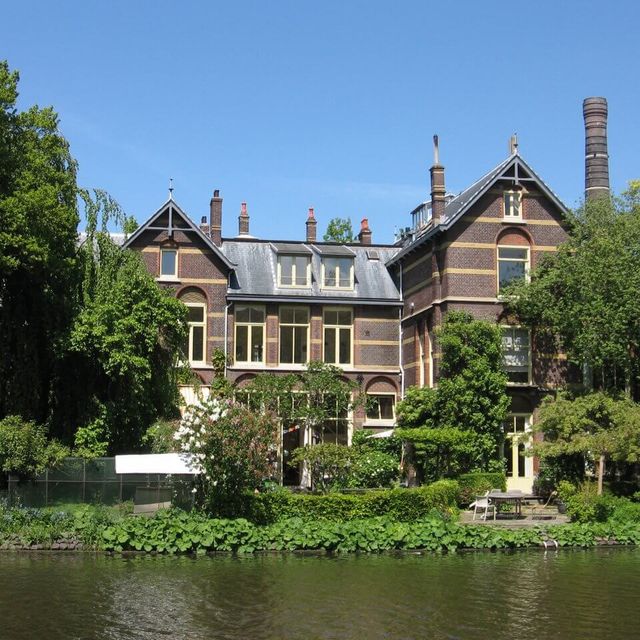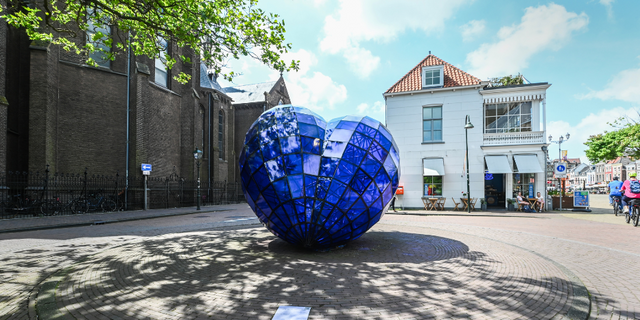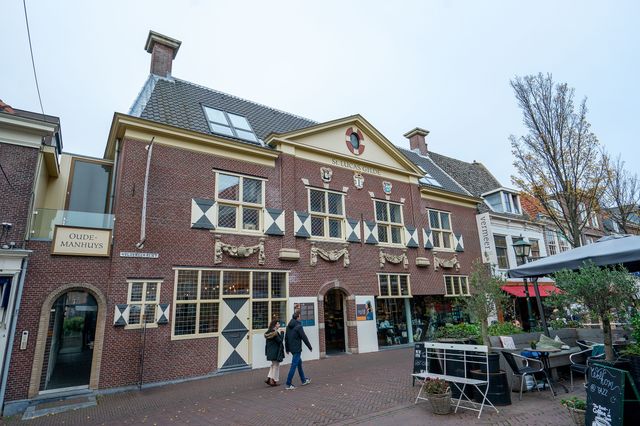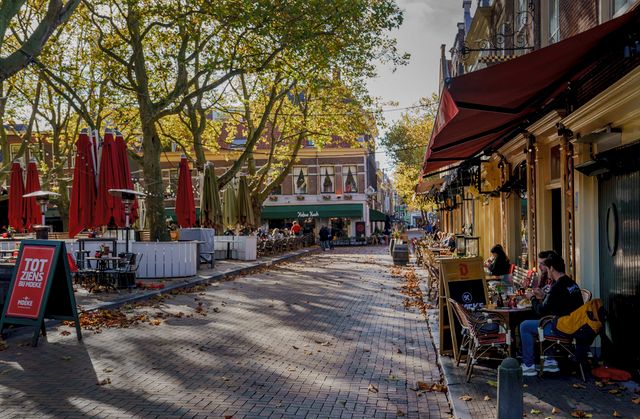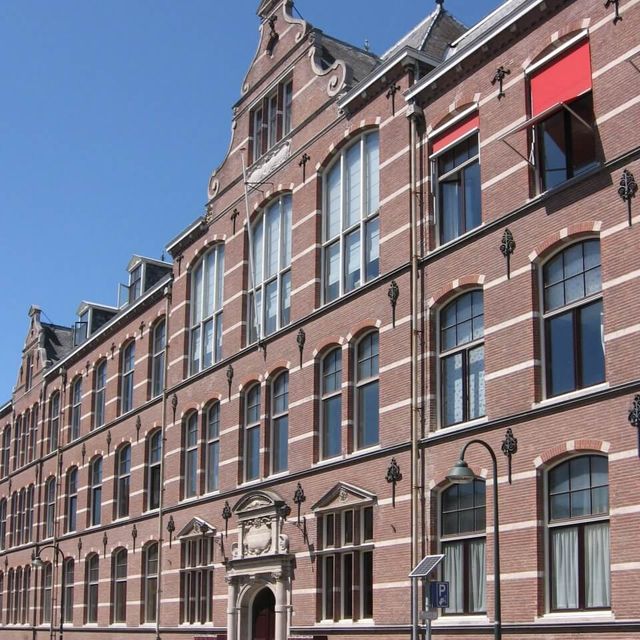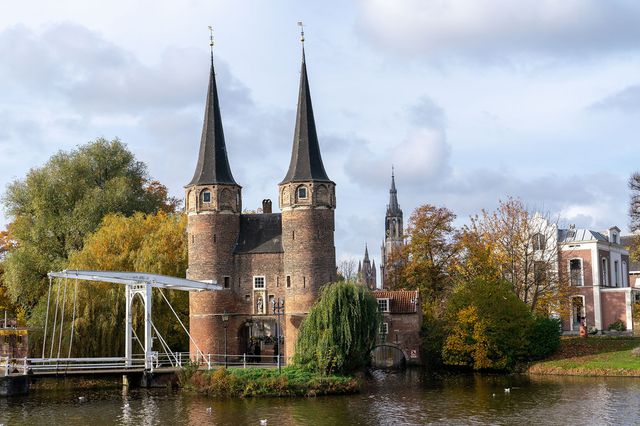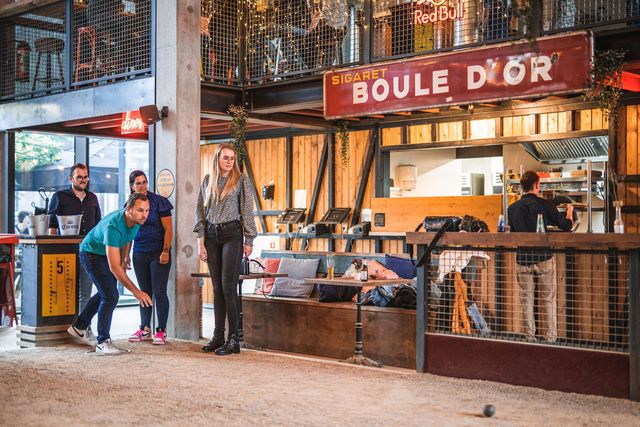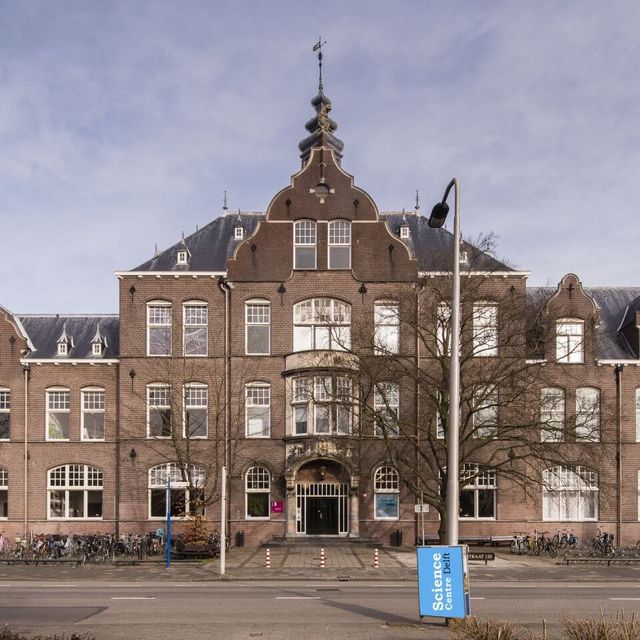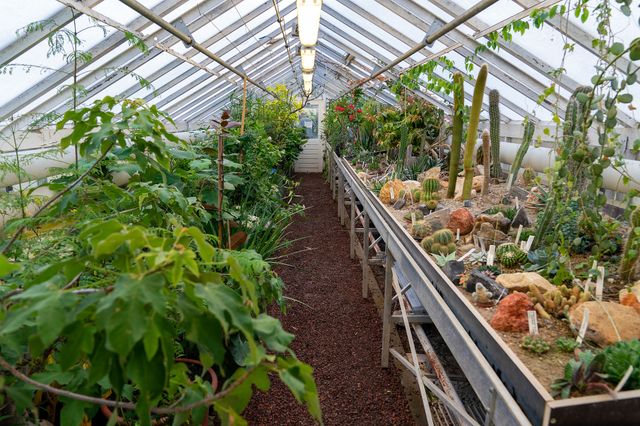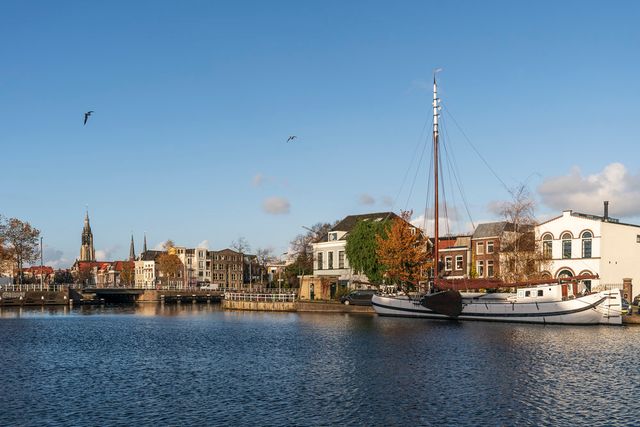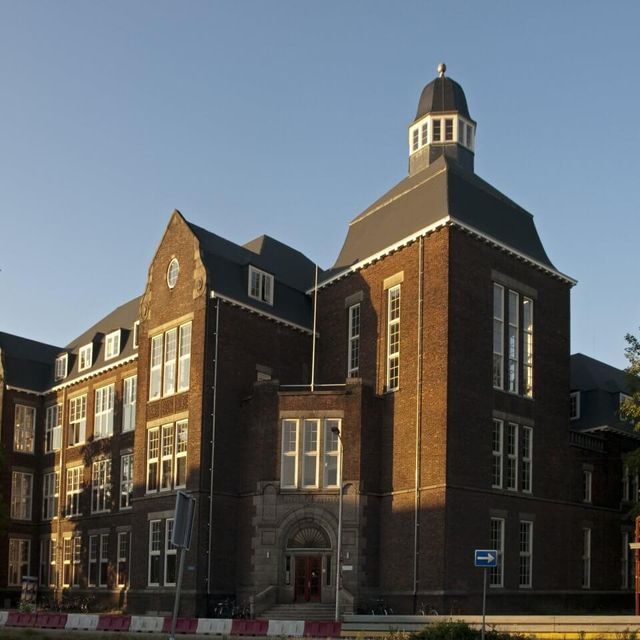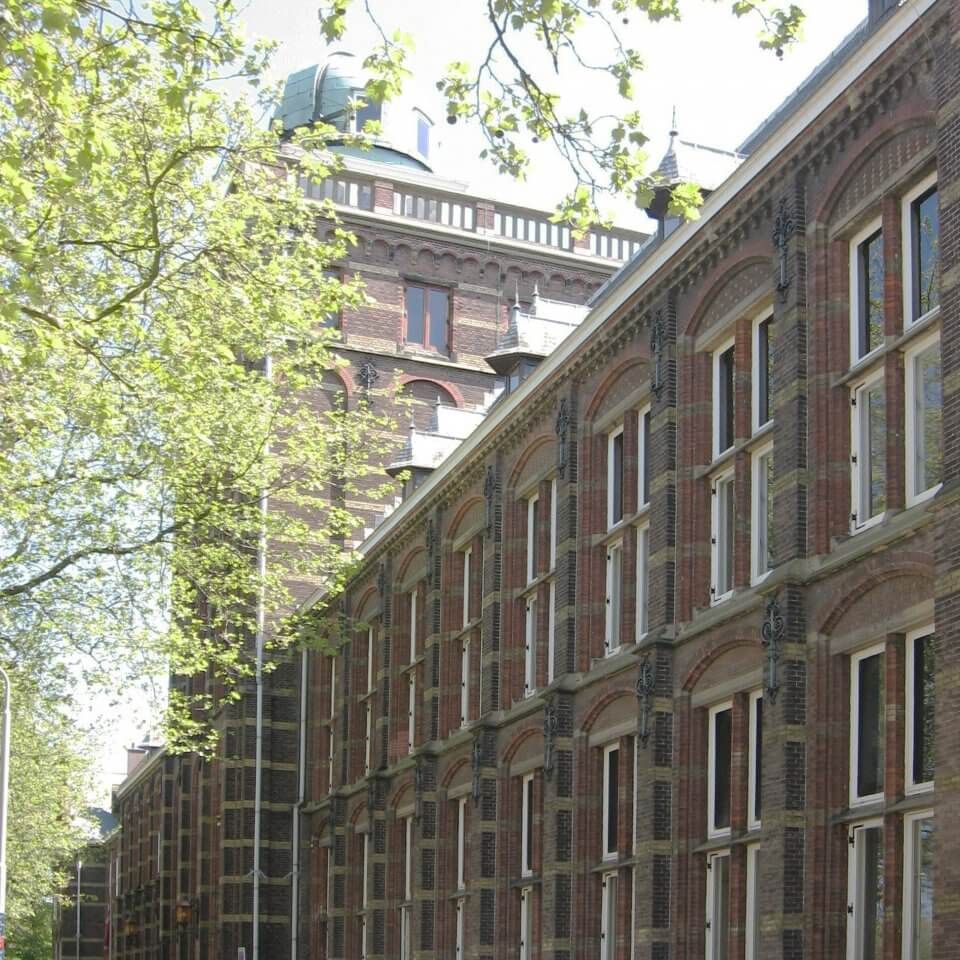
Geodesy and Observatory
Today: Student housing complex (DUWO) and Stichting de Hollandse Cirkel Address: Kanaalweg 4 Year of construction: 1892-1895 Architect: J. van Lokhorst
Geodesy, surveying and levelling
Chief government architect Jacobus van Lokhorst designed a majestic building (111.5 m long) in the Renaissance Revival style on Kanaalweg for the Geodesy degree programme. It was built between 1892 and 1894. In 1896, it was occupied by the Polytechnic School of Surveying and Levelling. The Netherlands Triangulation Service (managed by the Netherlands Geodetic Commission) was also housed here at that time. Triangulation is a system for measuring and mapping large areas for the purpose of drawing up, for example, land registry maps, topographic maps or geographical information systems. A 52-metre long hall with a veranda was built at the rear of the building. Here, geodetic exercises and measurements could be conducted in the open air.
Observatory, modelled on the Leiden Observatory
The observatory form…
Geodesy, surveying and levelling
Chief government architect Jacobus van Lokhorst designed a majestic building (111.5 m long) in the Renaissance Revival style on Kanaalweg for the Geodesy degree programme. It was built between 1892 and 1894. In 1896, it was occupied by the Polytechnic School of Surveying and Levelling. The Netherlands Triangulation Service (managed by the Netherlands Geodetic Commission) was also housed here at that time. Triangulation is a system for measuring and mapping large areas for the purpose of drawing up, for example, land registry maps, topographic maps or geographical information systems. A 52-metre long hall with a veranda was built at the rear of the building. Here, geodetic exercises and measurements could be conducted in the open air.
Observatory, modelled on the Leiden Observatory
The observatory forms a distinctive landmark at Kanaalweg 4. It was inspired by the Leiden Observatory. Until about 1930, the dome was used for timekeeping measurements in the Netherlands based on the position of the stars. The same measurements were carried out in Leiden. The average of the two was used as the actual time in the Netherlands. The Royal Netherlands Association for Meteorology and Astronomy recently ‘borrowed’ the dome from the current user of the building, DUWO (student housing foundation). Stichting de Hollandse Cirkel, a foundation specialising in the history of geodetics, is currently located one floor lower in the tower, with a collection of old geodesy instruments.

